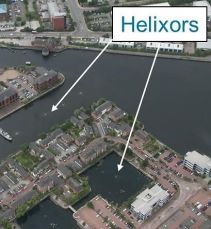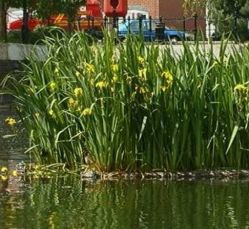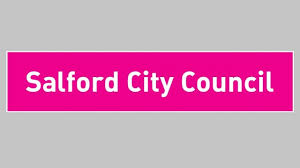How can freshwater science enable urban regeneration?
The challenge
The Manchester Ship Canal (MSC) opened in 1894 and was one of the busiest waterways in Europe. It was polluted by industrial discharges, sewage overflows, and surface water runoff, including from the River Irwell which forms the headwaters of the MSC. Salmon disappeared from the River Irwell in the 1850s and rowing races were abandoned in the 1970s.
Despite the real estate value of Salford docks being estimated at £550m, regeneration in the 1980s was prevented by unpleasant odours, bubbling gas, and sediment rafts. Addressing these water quality issues had become a major concern for developers
The solution
Research led by Keith White established the cause and extent of water pollution in the upper MSC and Salford Quays. This led to evidence based restoration programmes that have rejuvenated the waterway and surrounding areas. The improvement in water quality was the essential first step in the development of Salford Quays, a development which has seen approximately 2000 homes being built and the arrival of 900 businesses employing over 35,000 people.


'Helixor' mixers installed at Salford Quays to prevent water stratification (left) and habitat diversification using floating islands (right) Source: APEM Ltd
Dr White’s research has been translated into practical solutions for the clean-up of contaminated waterways, with quick and effective change being achieved by working alongside the spin-out company APEM Ltd (Aquatic Pollution and Environmental Monitoring.) APEM, founded by Dr Keith Hendry at the University in the 1980s, is now one of the largest independent aquatic science consultancies in Europe, and its continuing commercial activities relating to water quality management are supported by White’s research.
“Maintaining our links with The University of Manchester has been critical to the success of APEM” says Dr Keith Hendry, Managing Director, APEM Ltd.
Resulting benefits
In the mid 1980s Salford docks were derelict and contaminated, their waters polluted and lifeless. Salford Council’s redevelopment masterplan sought to create a new quarter of the city in which all parts of the development were related to water. The work of the University of Manchester and APEM played a key role in enabling this vision to be realised.
Today, the redevelopment of Salford Quays has created a world-class business, cultural and residential area of great national and regional significance. Water quality continues to be monitored by APEM, over 25 years after the initial research was carried out.
Future directions
The University and APEM have developed strong links over the course of seven PhD projects and many MSc projects. By enabling a better understanding of how the local ecosystem functions and changes over time, the University is contributing to improvements in the management of urban bodies of water, both in Greater Manchester and across the UK.
Add Pingback










